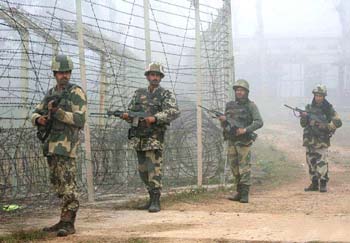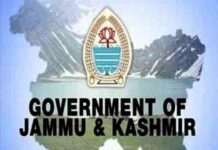KL NEWS NETWORK
SRINAGAR

Thousands of people rushing out of their border residences towards the hinterland are not only fighting for space. They are also announcing the burial of the Vajpayee doctrine, a set of initiatives that had given erstwhile Chief Minister Mufti Mohammad Sayeed a rare credibility while governing sensitive state like Jammu and Kashmir.
Vajpayee’s Kashmir era was made distinct by a set of statements and the initiative. His landmark initiative was the ceasefire at the LoC that India and Pakistan jointly implemented from the night of November 26, 2003. This had helped more than a million people living close to the LoC to see the light of the day, perhaps for the first time after more than 13 years. Since shelling was routine on the LoC and the International Border (IB), most of the residents would slide into the dungeons for most of the day and come out only during nights after being reassuring themselves that there was no shelling. Most of the villages on way to Aman Setu in Uri were only accessible for expert crawlers during nights.
That was not the only thing that defined Vajpayee vision on Kashmir. He drove to Lahore and faced an embarrassing Kargil later in 1999 summer. But he restricted the scope of the conflict and kept it restricted to the Kargil mountains. Then again he talked at Agra. At the peak of the serious tensions, Vajpayee scripted his famous poem: Jung Nahin Honay Daingay.
Vajpayee faced attack on parliament and a hijacking that led to the exchange of three high value prisoners at Kandhar. He always talked tough but ensured that the two neighbours should not go to war. Neighbours, he always insisted, cannot be changed.
Almost a decade later when the people are fleeing from their Samba, Kathua, Jammu and parts of Kupwara and Rajouri homes to safe areas in the hinterland, Vajpayee is apparently undone. His doctrine has been pushed to the history books. This is regardless of whether the two countries would go to war or not.
People who have fled from the home said they had seen so much of routine life in last one decade that they had forgotten the lives they lived before that. They had even given up their practice of maintaining the dungeons, the underground bunkers that state would fund, and filled them. They had de-mined their fields are tilled them. They had taken roads to their villages and dismantled the walls of stone shields that would protect their nocturnal movement.
Ten years later, they see their clocks turning back. Now instead of staying put and waiting to get shelled again, they know the costs and are fleeing.
Unlike most of Kashmir where migration is by and large voluntary, it is literally enforced in most of the villages falling on IB – Jammu, Samba and Kathua.
Interestingly, in scores of villages, the residents are unwilling to migrate, partly because of the harvest and partly because they lack adequate fall-back systems, post migration.
In most of Jammu border areas, the BSF has taken over the access roads to the border belts as reinforcements are moving in. As a precautionary measure, 10 kms of area close to the borders has been sanitized for most of the Redcliff line.















